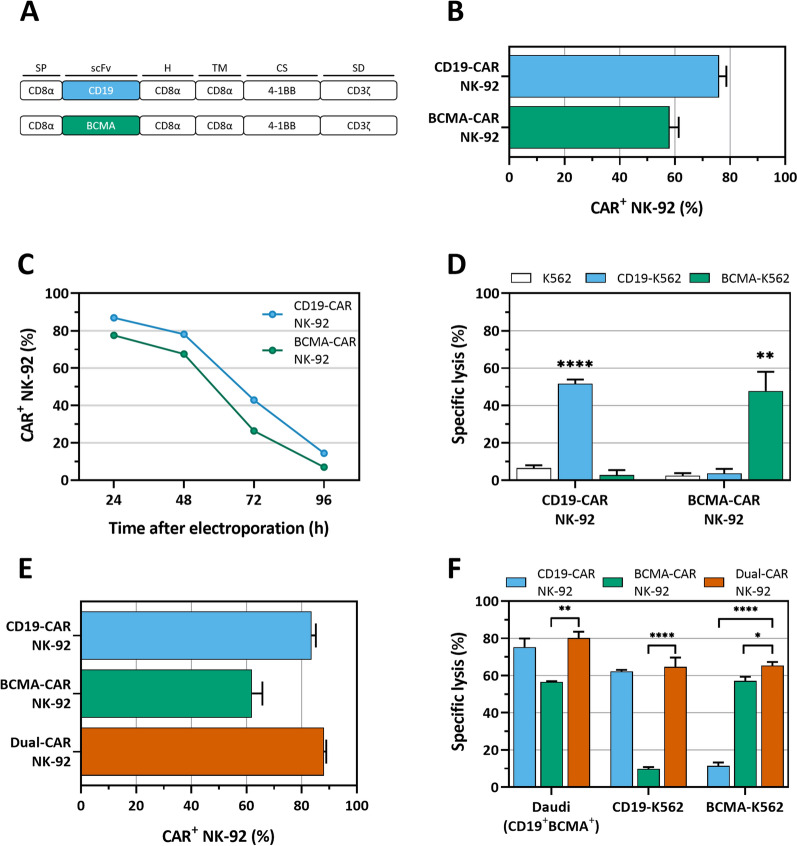Fig. 1.
Generation and functional validation of dual-CAR NK-92. A Structural composition of the BCMA- and CD19-specific CARs used for the dual-CAR approach. B High CAR expression in transfected NK-92 cells, 24 h after electroporation with 50 µg/mL CAR-encoding mRNA (N = 26–28). C CD19 and BCMA-CAR surface expression kinetics in NK-92 over four days (N = 1). D Only target cells expressing cognate antigen are lysed, confirming CAR specificity. Statistical analysis was performed using ANOVA with Tukey’s correction for multiple comparisons (N = 3). E CAR expression of NK-92 transfected with mRNA encoding one (CD19-CAR NK-92 and BCMA-CAR NK-92) or both CARs (dual-CAR NK-92). Expression for dual-CAR NK-92 represents cells positive for both CARs (N = 19). F Dual-CAR NK-92 lyse BCMA+CD19+ (Daudi), as well as single BCMA+ (BCMA-K562) or CD19+ (CD19-K562) tumor cells (N = 3). Statistical analysis was performed using ANOVA with Dunnett’s correction for multiple comparisons relative to the dual-CAR NK-92 condition. *p < 0.05. **p < 0.01. ****p < 0.0001. BCMA: B-cell maturation antigen; CAR: chimeric antigen receptor; CS: co-stimulatory domain; H: hinge domain; scFv: single-chain variable fragment; SD: signaling domain; SP: signal peptide; TM: transmembrane domain

